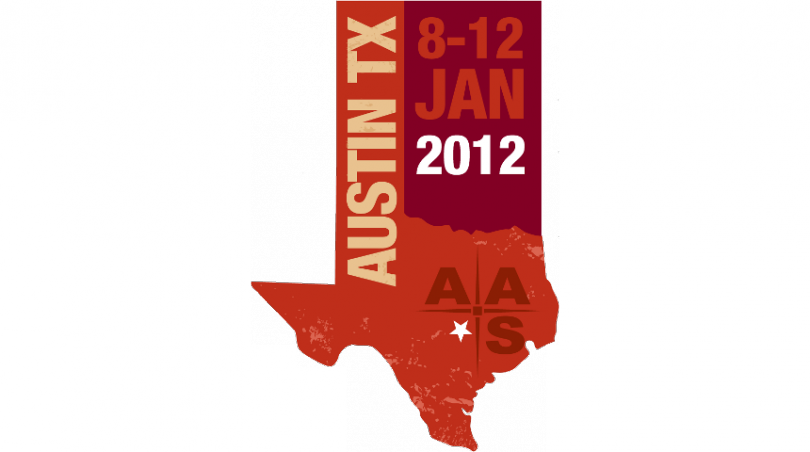219th meeting
Overview


The 219th AAS meeting was held 8-12 January 2012 in Austin, TX.
Downloadable PDF of Meeting Program View the Block Schedule
Schedule Highlights
Kavli Foundation Plenary Lecture
“The Cosmic Microwave Background and Neutrinos”
Lyman A. Page (Princeton University)
Seven years of WMAP data on the cosmic microwave background (CMB) radiation, combined with additional measurements such as baryon acoustic oscillations in the distribution of galaxies, have ushered in an unprecedented era of precision cosmology. The standard λCDM cosmological model has passed many stringent tests, and its basic parameters have been tightly constrained. We are now extending the frontier into new areas with measurements of CMB polarization, the primordial helium mass fraction, the Sunyaev-Zel’dovich effect, and the number of neutrino species and their combined mass. Forthcoming results from ESA’s Planck mission and new underground neutrino detectors promise to take precision cosmology and astroparticle physics to a whole new level.
Lancelot M. Berkeley – New York Community Trust Prize Lecture
“Mapping the Fuel for Star Formation in Early Universe Galaxies”
Linda Tacconi (Max Planck Institute for Extraterrestrial Physics)
Stars form from cold molecular interstellar gas. Since such gas is relatively rare in the Milky Way and its modern cousins, such galaxies form only a few new stars per year. Massive galaxies in the distant universe formed stars much more rapidly. Was star formation more efficient in the past, and/or were early galaxies richer in gas? The answer was elusive when our instruments could probe molecules only in the most luminous and rare objects such as mergers and quasars. But a new survey of molecular gas in typical massive star-forming galaxies at redshifts from about 1.2 to 2.3 (corresponding to when the universe was 24% to 40% of its current age) reveals that distant star-forming galaxies were indeed molecular-gas rich and that the star-formation efficiency is not strongly dependent on cosmic epoch.
